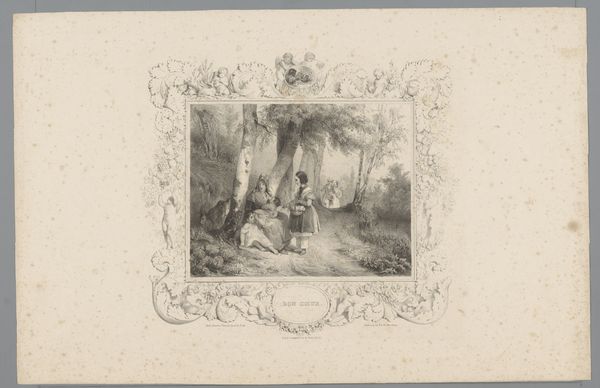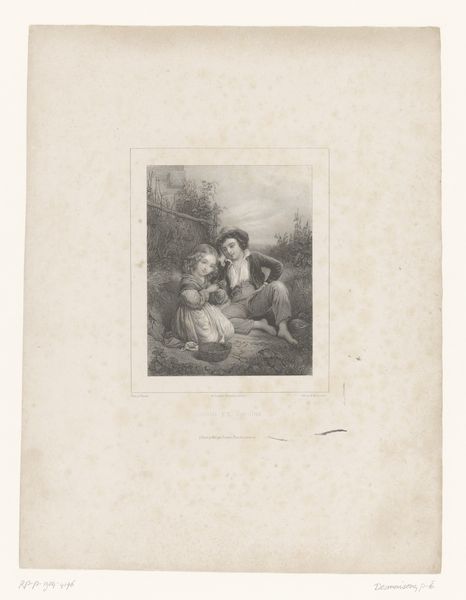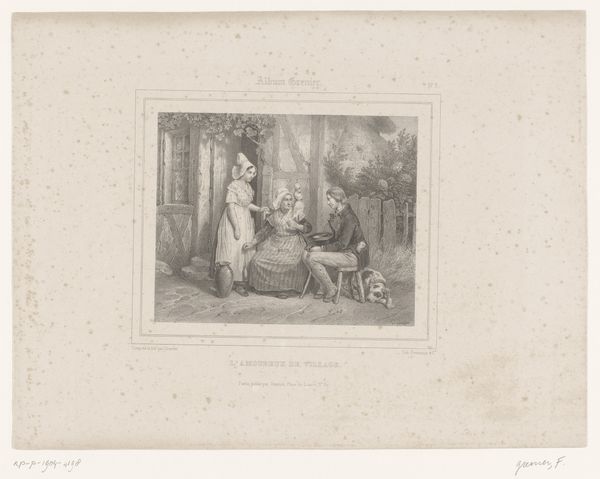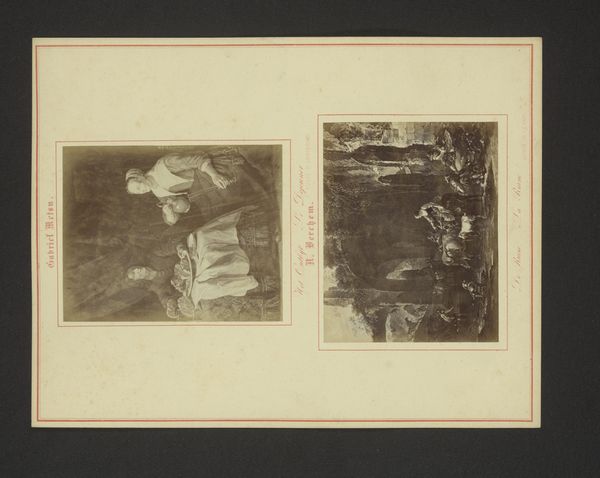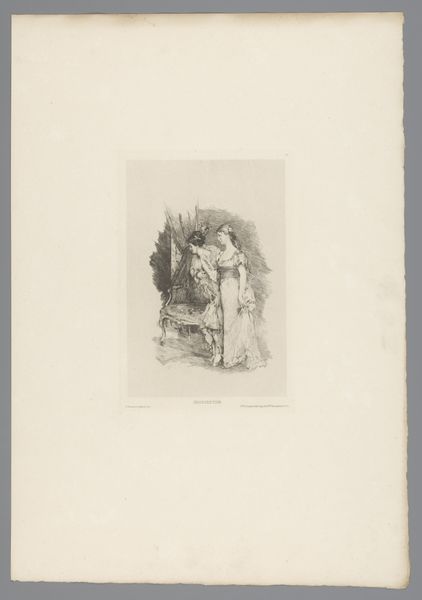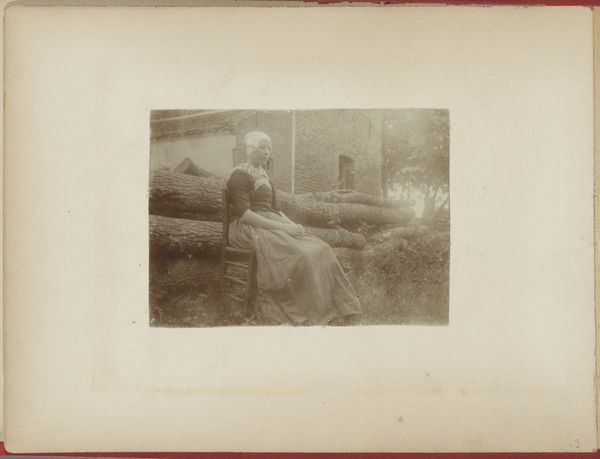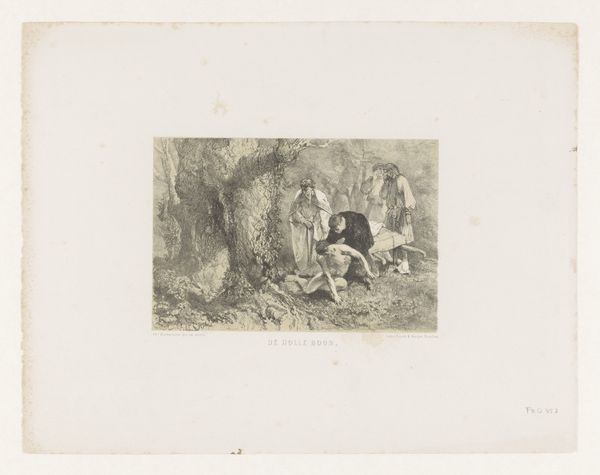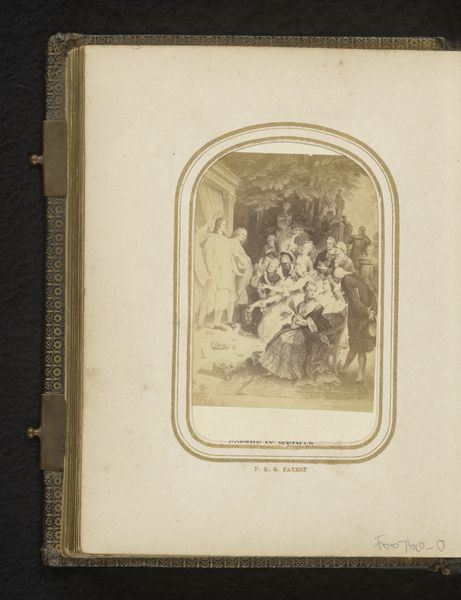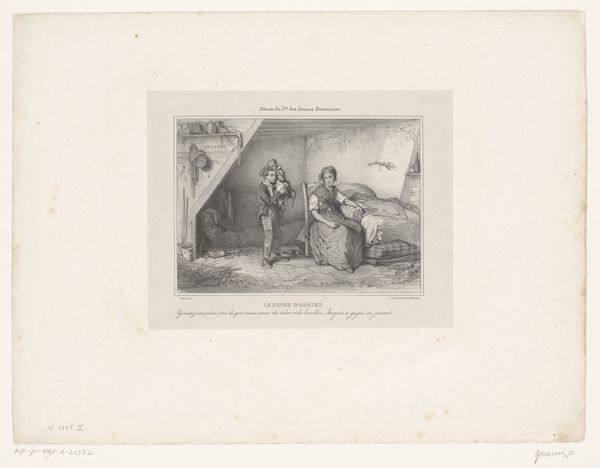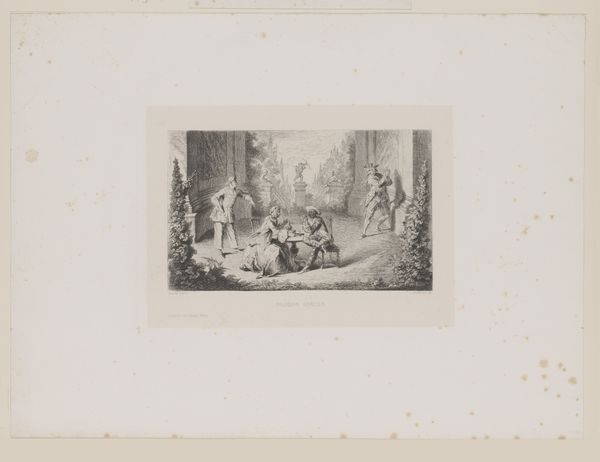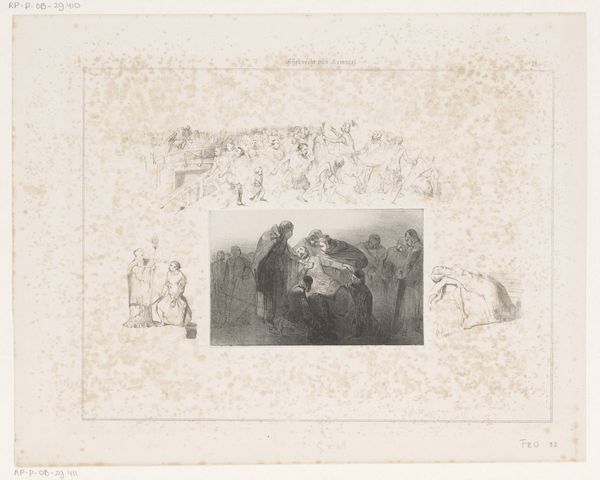
drawing, print, paper, engraving
#
drawing
# print
#
old engraving style
#
figuration
#
paper
#
group-portraits
#
romanticism
#
genre-painting
#
engraving
#
realism
Dimensions: height 274 mm, width 359 mm
Copyright: Rijks Museum: Open Domain
Editor: Here we have "Three Children Gardening," an 1830 engraving by François Grenier, currently housed at the Rijksmuseum. I’m struck by how realistically he’s rendered their clothing and postures – a sort of idealized version of children’s labor, maybe? What aspects of this print stand out to you? Curator: Well, I immediately consider the materials involved. Paper, ink, and the metal plate are fundamental, but so is the labor. Grenier's technical skill allowed for the mass reproduction of this image. What does that say about accessibility and consumption during this period? Was this image meant for a wealthy elite, or for broader distribution? Editor: That’s a great point! The mass production element completely reframes the work. Did this era see an increase in printed imagery depicting domestic scenes, making them more commonplace and accessible to the middle class? Curator: Exactly. And beyond accessibility, we should think about the *function* of this image as a commodity. Was it primarily decorative, educational, or perhaps even subtly propagandistic, reinforcing certain ideals about childhood and work? Notice how, even in ‘play,’ labor is emphasized. The image normalizes their future roles. Editor: So, by examining the material production and the social context, we’re seeing this less as a quaint depiction of children and more as a cog in the larger machine of 19th-century social and economic forces? Curator: Precisely. And consider where the materials themselves originated! Did the paper come from a local mill? Was the ink imported? Following the lifecycle of the materials can reveal intricate networks of trade and colonial influence. Editor: Wow, that’s incredible! I never thought about following the literal material trail. This makes me rethink how art participates in social structures and labor systems. Curator: It shifts the focus from simply aesthetic appreciation to a critical understanding of its production, circulation, and social impact. A deeper appreciation rooted in real conditions. Editor: Definitely! Looking at art from a materialist perspective has opened up a whole new layer of understanding for me.
Comments
No comments
Be the first to comment and join the conversation on the ultimate creative platform.
